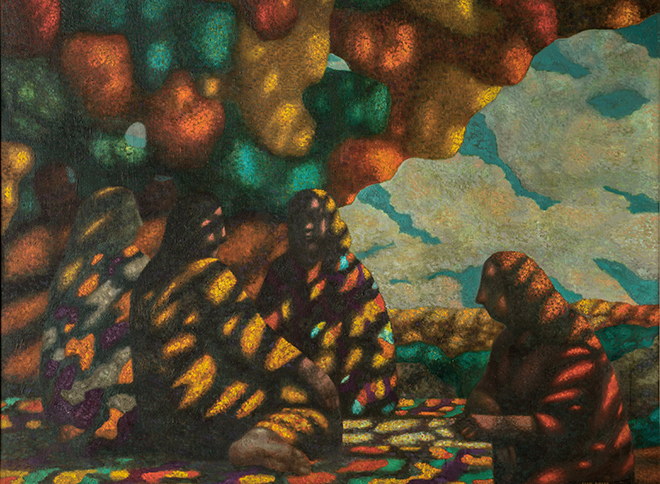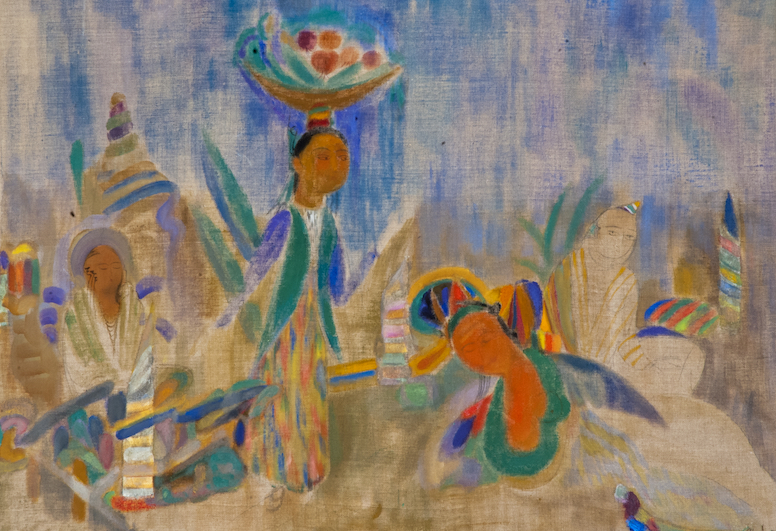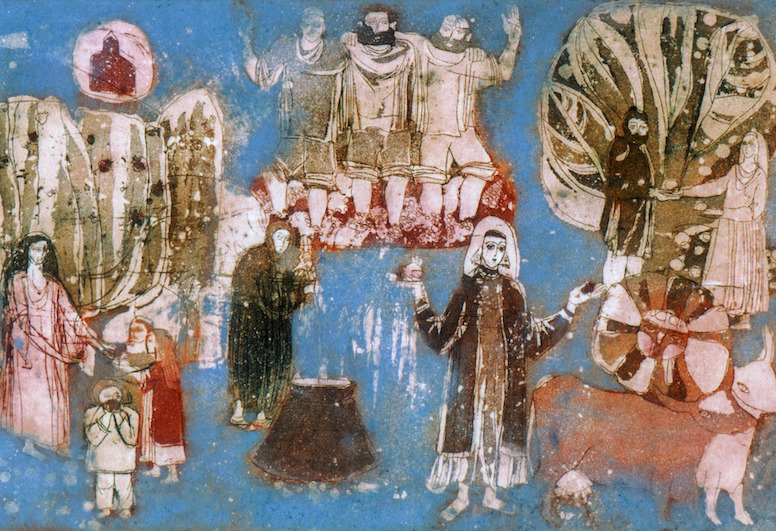The Moscow Museum of Oriental Art will present two exhibitions this August. One is devoted to contemporary South Korean printed graphics and the other presents painting and sculpture of the Caucasus and Central Asia from the second half of the 20th and early 21st centuries.

The exhibition of South Korean artists, titled Polyphony, will be held between August 5-30. The technique of the printed graphics has developed dynamically in the Republic of Korea since the late 1950s, although the museum will only feature works from the past several decades. This mode of art is still popular, according to the curator of the exhibition Irina Eliseeva; it remains democratic, accessible, and understandable to a broad audience. The organizers managed to collect more than sixty works made using different techniques, such as woodcut, linocut, and silk-screen printing. Polyphony showcases works by authors such as Kim Seung-Yeon, Lee Jong Han, Choung Za Kim, among others.
In addition, the exhibition Selected for Half a Century: Painting, Graphics, and Sculpture of the Caucasus and Central Asia will be held between August 7th and November 8th. The exhibition will include about 100 works, the authors of which sought to combine the artistic experience of the East and West. Resistance to the dictate of Socialist Realism and an appeal to national traditions determined some of the common features in the works of the represented artists who include Tair Salakhov, Kirill Zdanevich, Akop Akopyan, Iya Gigoshvili, and many others from Armenia, Georgia, Azerbaijan and Uzbekistan. The main idea of the exposition is not about confrontation or struggle, but more about self-awareness and the acquisition of one's own artistic language among the diversity of world culture.
Top right: Azam Atakhanov. Midday Rest, 1998 Bottom left: Lekim Ibragimov. Valley of Flowers, 1996
Bottom right: Iya Gigoshvili. Autumn from the Seasons series, 1983 Museum of Oriental Art
Curator Svetlana Khromchenko tells the following about the preparation of the exposition: “Many works for the exhibition were selected directly from the artists' workshops. At that time, trips to different regions were taken to get acquainted with the artistic life. It was very helpful. When we got to Georgia and found ourselves among these wonderful hills, we understood very clearly why in Tengiz Mirzashvili's painting there are such restrained and noble rhythms, and the same noble colors glowing from within his works. When we got to the latitudes dried by the wind, we understood why the paintings of contemporary Azerbaijani artists are so contrasting. Now the modern viewer has the opportunity to understand the peculiarities of the world in which they worked.”
The institution Ars Asiatica, later renamed the State Museum of Oriental Art, was founded in 1918 in Moscow through an initiative of the scientist Pavel Muratov and the art critic Igor Grabar. After the creation of the national republics within the USSR, it became necessary to organize a specialized museum with the purpose of representing and studying the cultures of the Soviet East. At the moment, the museum is still active and its collection includes about 150,000 works of painting, sculpture, graphics, and decorative and applied art of the peoples of the Far East, Western and Central Asia, the Caucasus, and other regions.
More information about exhibitions and the Museum of Oriental Art are available on their website orientmuseum.ru.








